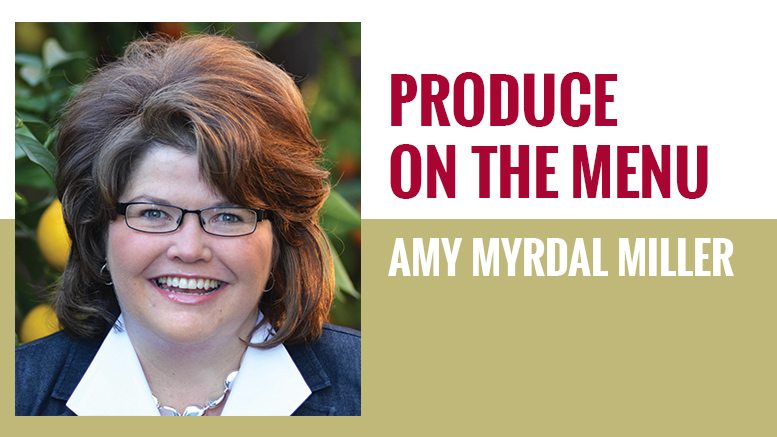The Role of Restaurants in Sustainable Agriculture
December 20, 2021 | 4 min to read
Sustainability in agriculture is not just about terms like non-GMO or organic; it demands a balance between ecological and financial sustainability. Farmers are grappling with rising costs, leading to innovative solutions like automation and the introduction of new crop varieties such as Eiffel broccoli. Although the lengthy stems often go unused, there are opportunities for creative food applications, particularly in foodservice, which continues to evolve alongside consumer preferences for convenience and flavor.

Originally printed in the November 2021 issue of Produce Business.
Sustainability is a complex issue with many factors affecting whether a certain choice is sustainable. While consumers may limit their views of sustainability to a few terms like non-GMO, organic, or local, farmers know sustainability is an intricate interplay among seemingly endless options where no choice is truly sustainable unless it is also contributing to financial sustainability.
In my recent discussions with produce farmers on the west coast, the issue of financial sustainability is more prominent than ever. Rising input, labor, regulatory, and transportation costs are leaving little to no profit for growers with many saying they are growing certain crops at a loss and others leaving land fallow due to production costs far exceeding FOB or contract prices.
Many companies are looking at innovative options for alleviating production pressure, particularly with labor. Weeding and thinning robots from companies like FarmWise can now be seen very slowly moving through Salinas Valley and Yuma vegetable fields. Foodservice market leader Taylor Farms has automated Romaine lettuce harvesters that use water jets to cut the lettuce, an innovation that enhances food safety as well as reduces harvest crew size by up to 75%.
Using machines to do the work previously done by humans is a complex and investment-intensive undertaking that often starts with breeding. Bayer Vegetable Seeds, for example, has been breeding broccoli with longer stems, called High Rise Broccoli, or more affectionately the Eiffel variety, that can be machine harvested. Unfortunately, the breeding and commercialization moved far more quickly than development of harvesting machines. That’s the bad news. The good news is harvest crews love this broccoli because they can harvest it much more quickly resulting in greater piece rate earnings. The longer broccoli stems contain fewer leaves than traditional varieties, making it easier to cut and clean prior to packaging. The Eiffel variety also has a trait many consumers like — a milder, sweeter flavor compared to other varieties.
Much to the dismay of this writer, the long stems aren’t cut at the base and trimmed of leaves. The broccoli tends to be harvested close to the crown and trimmed to the buyer’s specifications with much or most of the stem left in the field. Apparently, many consumers don’t value the stem. One retailer noted that when they offered the longer stem broccoli, shoppers were snapping off the stems and leaving them behind, not wanting to pay by the pound for a part of the plant they don’t want to eat. Seeing the stems being left behind frustrated me during recent field tours. Sustainable production of food includes growing more with fewer inputs. Growing a longer stem and then leaving most of it behind doesn’t make sense. But if there is no or little retail demand for broccoli stems, are there foodservice sales opportunities for a milder, sweet stem? The answer is a definite yes.
The first option is the most obvious one because it already exists: use the stems to make broccoli slaw just like Mann Packing has been doing for years. The second option is to use the stems to make tempura battered broccoli sticks. A third option is to cut the stems into fun shapes for kids to dip in school nutrition programs for elementary school programs. This list could go on and on after a few interviews with creative culinary professionals, but the point is just viewing options for a vegetable or fruit crop through the lens of a retailer buyer demands options for getting the most production and profit per acre. Yes, additional tasks in field take time, and time is money for harvest crews. But there is endless innovation in the produce sector today; let’s harvest the great minds looking at technology options to find uses for produce across our food system.
Foodservice leaders have been saying for years that looks don’t matter; they’ll take imperfect produce and make it perfect through culinary technique and ingredient pairings. What they really want is the best possible flavor. Labor-saving, value-added benefits are also valuable to foodservice operators since today labor is as difficult to source in foodservice as it is in agriculture. This may change in the future, but what won’t change is the role of restaurants in society.
Consumers will continue to outsource as much food production as possible, spending less and less time shopping for and preparing food at home and more and more of their food dollar buying food prepared by others, whether through a delivery app, drive-thru window, walk-up counter, or via table service. My recommendation is for everyone in produce to seriously consider the role restaurants can play in making all our businesses more sustainable.

Amy Myrdal Miller, MS, RDN, FAND is a farmer’s daughter from North Dakota, award-winning dietitian, culinary nutrition expert, and founder and president of Farmer’s Daughter Consulting, Inc. She is consultant for the Produce for Better Health Foundation, a member of the Texas A&M AgriLife External Advisory Board, and a member of the Bayer Vegetable Seeds Horticultural Advisory Council. You can learn more about her business at www.farmersdaughterconsulting.com, and you can follow her insights on food and flavor on social media @AmyMyrdalMiller
2 of 12 article in Produce Business December 2021

